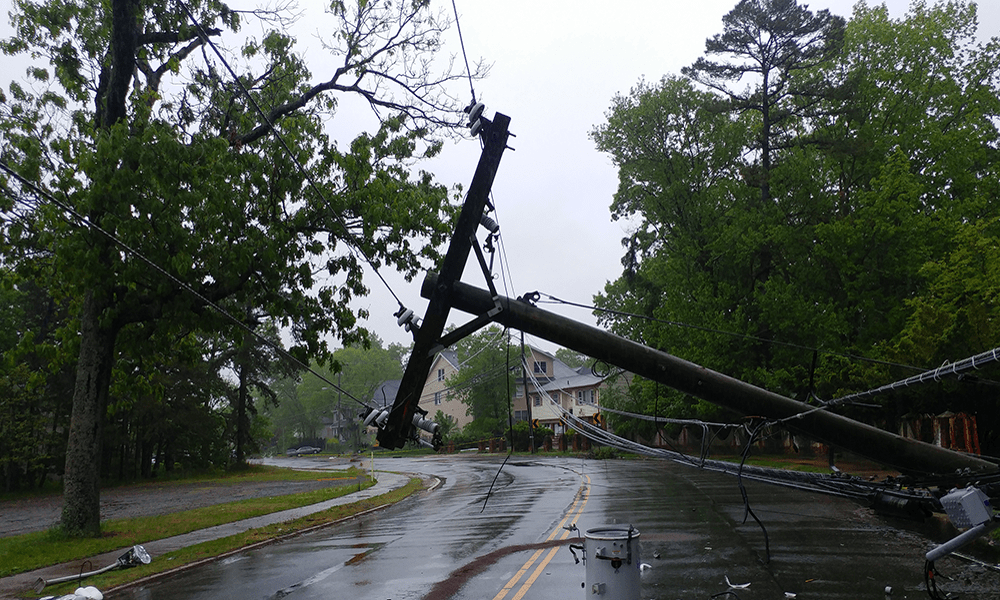JMU expert says don’t blow off statewide tornado drill
JMU News
Tornadoes may be rare in Virginia compared to some other parts of the country, but that’s no reason to shrug off the state’s annual tornado drill on Tuesday, March 16, said Mace Bentley, a professor of geography with a background in weather and climate research.
The National Weather Service and The Virginia Department of Emergency Management have scheduled the 2021 Virginia Statewide Tornado Drill for 9:45 a.m. tomorrow. The drill, which was canceled in 2020 due to the COVID-19 pandemic, is an opportunity to prepare for tornado threats and to test public warning systems.
As for participating in the drill while the pandemic continues, VDEM is encouraging groups to exercise precautions. "We would encourage each organization to determine on their own the extent to which they participate in the drill,” the agency said in announcing the drill. “For some organizations, just having some time to review the plan of how to get the warning and where people need to go for safety may be enough. If organizations can safely complete the drill while wearing masks and physical distancing, that is good, too. But having already canceled the drill last year, we want to make sure that we have it this year and let you decide how best it is for your organization to participate. Because, even in the COVID environment, if a tornado warning is issued, people will need to respond as that threat becomes the more immediate threat to life and property."
Bentley said, “If a tornado warning is issued by the Weather Service, don’t take chances.” Here are some actions Bentley recommends people do if they find themselves in the path of a tornado.
- If you’re in your house and you have a basement, that’s the best place to go. Not in a corner, but in the center of the basement. Debris tends to accumulate in the corners.
- If you don’t have a basement and you don’t have easy access to a crawl space, the best place to go would be to an interior room that has pipes in the walls. Something like a bathroom because that will reinforce those walls and protect you. Get into a bathtub if you have that and pull something over the top of you.
- If you’re in a mobile home, you should leave the mobile home. If you have a storm shelter, go there. If you don’t, the best place to go is a low-lying ditch. If the tornado got close enough, the winds would just pass over the top of you.
- If you’re in a car, don’t go under an overpass. That’s the wrong place to go because the winds get channeled under overpasses and they get stronger. The best place to go is to low spots.
Bentley also shared these answers to frequently asked questions about tornadoes.
When are tornadoes most common?
In our part of the country, April-May would be peak periods for the larger tornado outbreaks that can occur. It doesn’t mean you can’t get them in June, July or August. Anytime that it’s warm enough for thunderstorms, you have a threat for tornadoes.
Can tornadoes form in the mountainous areas of the state?
Yes. You don’t want to let your guard down here at all because tornado spin-ups in mountainous regions, where it’s complex terrain, can actually occur much quicker.
Can tornadoes be predicted?
Meteorologists can predict the presence of the ingredients needed for tornadoes to form. We do a pretty good job of that nowadays. With our numerical models, we can forecast at least out to about two days for severe weather.
How do tornadoes form?
You need a lot of atmospheric instability. You need a lot of warm air at the surface that wants to bubble up and rise very easily and cold air above that. And once we start getting into spring and summer, that daytime sun gets stronger, you get more heating at the surface, therefore you get some lift. The second ingredient usually is a frontal boundary nearby. A cold front or a warm front can provide a focusing mechanism to enhance that lift that is already there in the atmosphere. As you go from the surface, you might have a wind out of the south and that’s bringing in that warm air. As you get up to 15,000 feet above the ground you may have wind out of the northwest. That change from south to northwest imparts twist in the updraft and as that updraft gets thicker and thicker the twist can get accelerated and the faster and faster that spin occurs, you can start getting development of a tornado.
More about Mace Bentley: Bentley is a geographer who has teaching and research interests in weather-societal interactions and critical physical geography. This interdisciplinary research examines issues surrounding human-land-atmosphere interactions and works to untangle their complex, critical relationships.
About geography at JMU: A part of the School of Integrated Sciences, the geography program empowers students to address problems associated with the spatial patterns and processes of human and environmental change. It does this by taking a highly integrated approach that couples the study of people and the environment with the use of cutting-edge tools such as digital mapping technologies and images of the earth collected from satellites and aircraft. This unique approach produces graduates who are ‘big picture’ thinkers and are valued by a wide range of employers and prepared for further study in geography and related disciplines.
# # #
To arrange an interview with Bentley, please contact Eric Gorton, media relations coordinator, at gortonej@jmu.edu or 540-908-1760.
